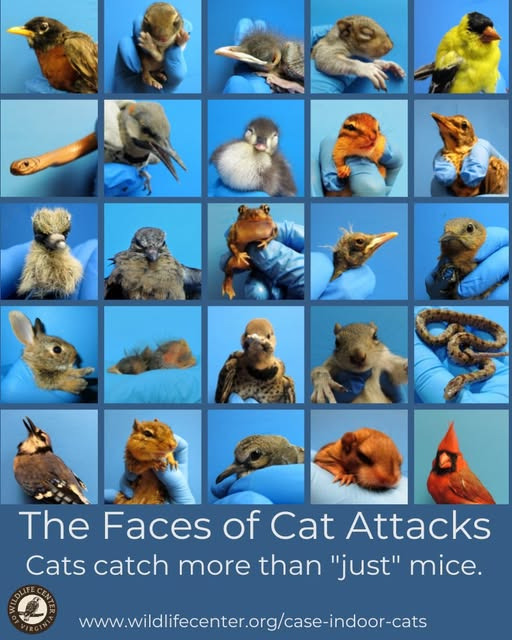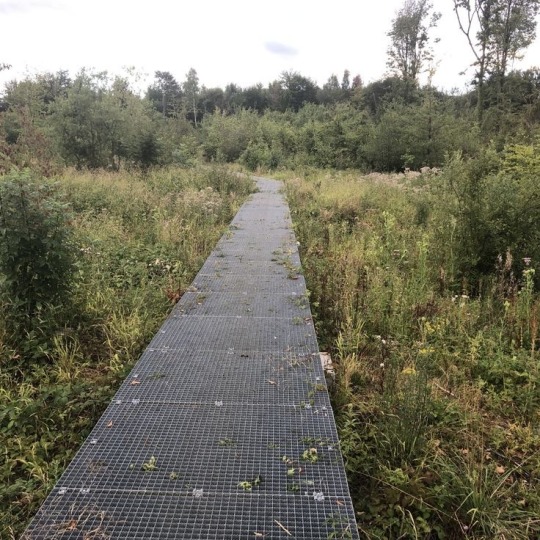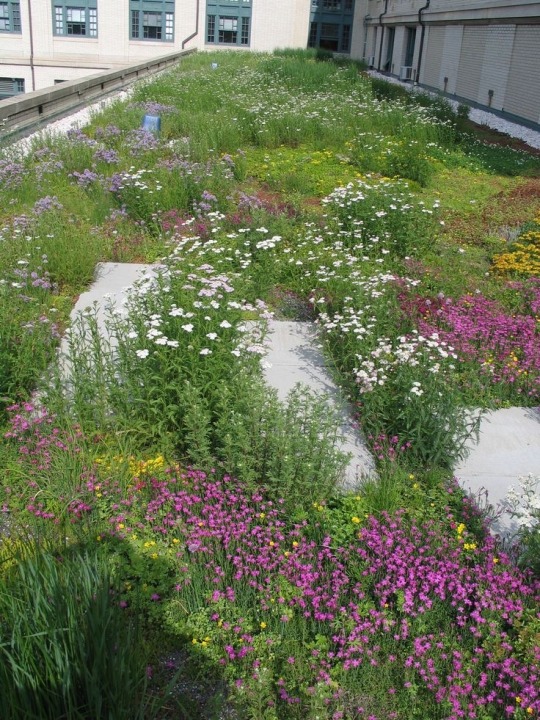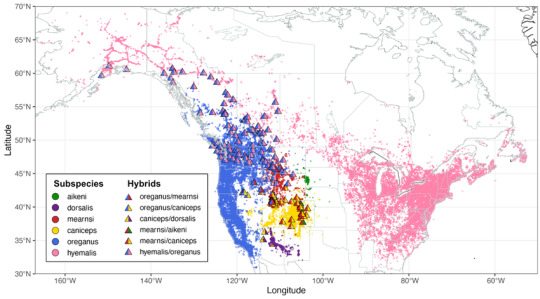My posts -> #my greensNature and holistic lifestyle sideblogMain:@happibeans Header and pfp by me!
Don't wanna be here? Send us removal request.
Text

If you care about your local wildlife, you won't let your cat free roam outside. There are ways to allow your cat some outside time that will keep both your cat and the local wildlife safe, if that's something you're set on. Enclosed outside spaces (catio, enclosed patio area, properly fenced-in and cat-proofed backyard) or taking your cat on walks are both great ways to get your cat outside while still keeping your cat and the local ecosystem protected.
5K notes
·
View notes
Text
Alternatives to trashbags
I sort my trash now and find that I dont go through trash bags very quickly because of that. I got 2 boxes of gallon trashbags for christmas 2 years ago (dont worry I wanted that lol) and Im just now going through the boxes. I try to at least clean all of the things I aim to recycle, so that when they go into my recycle bins, they wont stink or cause a mess. Then I crush them up so they can fit more compact into my bins. I also take almost all food I eat and compost it, so hardly any food waste goes into my trashcan anymore. Its naturally recycled by other creatures and microorganisms and composting keeps vile odors from anerobic bacteria and mold out my house.
I say this to imagine what trash collection would look like without use of trash bags. I can still see their use, especially for biohazardous items like soiled diapers and menstrual products. But I can also imagine those being bagged in more biodegradable bags that are specially made to contain bodily fluids and also give signal to trash collectors to sort those into designated trash compartments to be incinerated or composted.
Of course this idea would require immense adaptation by the public to revolutionize how they manage their own garbage beyond collecting it all in the same recepticle and rolling out the bin for the trash collectors to deal with. But for people who have a hollistic understanding of waste management systems, the task to sort trash isnt so much hassle, especially since it can be rewarding and stimulating, not to mention educational to know what things are made from to sort them.
Other than biodegradable bags with special, non toxic colors to differentiate garbage contents, Im not sure what else would realistically replace garbage bags that wont considerably affect infrastructure. People could simply not use trash bags, but theyd have to be very mindful not to inconvenience themselves by soiling their trashcan with certain wastes and inviting pests or creating spill and toxic mix of chemicals. People could continue to not use trashbags and could sort trash in multiple receptacles labled and designated for certain hazards, like chemicals, organic/biohazardous waste, and food (if they dont compost). Trash sorting would become a more involved chore like the addition of maintaining abosorbants and neutralizers in the bins for chemicals and foods. But it would be worth it for future preservation of the environment in which we live and raise our families, and would be simplified by the aid and direction of government and local organizations for households and companies making the switch.
Any ideas about alternatives to trash bags and trash management?
1 note
·
View note
Text
A caveat to this study: the researchers were primarily looking at insect pollinator biodiversity. Planting a few native wildflowers in your garden will not suddenly cause unusual megafauna from the surrounding hinterlands to crowd onto your porch.
That being said, this study backs up Douglas Tallamy's optimistic vision of Homegrown National Park, which calls for people in communities of all sizes to dedicate some of their yard (or porch or balcony) to native plants. This creates a patchwork of microhabitats that can support more mobile insect life and other small beings, which is particularly crucial in areas where habitat fragmentation is severe. This patchwork can create migration corridors, at least for smaller, very mobile species, between larger areas of habitat that were previously cut off from each other.
It may not seem like much to have a few pots of native flowers on your tiny little balcony compared to someone who can rewild acres of land, but it makes more of a difference than you may realize. You may just be creating a place where a pollinating insect flying by can get some nectar, or lay her eggs. Moreover, by planting native species you're showing your neighbors these plants can be just as beautiful as non-native ornamentals, and they may follow suit.
In a time when habitat loss is the single biggest cause of species endangerment and extinction, every bit of native habitat restored makes a difference.
6K notes
·
View notes
Text










Nature can thrive in urban environments if we build them right
3K notes
·
View notes
Text
How I Grew a Green Thumb and You Can Too
As someone who has been gardening my entire life, I often take for granted that the things I've learned are not common knowledge. When I see garden "tips" or "advice" I often scoff and shake my head because I know better, but a lot of laypeople don't and so I want to give you all the tools you need to be a successful gardener and hopefully someone who better understands themselves, plants, and their environment.
Firstly, to be a successful gardener, you need to change your perspective. Treat gardening, whether it be growing house plants in your apartment or maintaining an acre of wildlife habitat, as land management. To better facilitate this, let me define some terms:
Land Management - Overseeing and making decisions about the use, development, and conservation of land
Environment - The circumstances, objects, or conditions by which one is surrounded
Ecosystem - An interconnected system between organisms and their environment that forms through their interaction
Permaculture - An agricultural method that seeks to integrate human activity with nature to create highly efficient self-sustaining ecosystems
So, to be a successful land manager, you need to understand your environment and your goals. Understanding your environment will help you know what conditions you will be working with or against. Understanding your goals will help you know what routes to go down based on your environment.
Example Environment Questions:
How much light does this area get?
How much humidity is in this area?
How much wind or airflow is there?
What temperature is it and how much does it fluctuate?
What kind of weather is typical here?
What are the seasons typically like here?
Where does the water in the area come from?
Where do the nutrients in the soil come from?
Example Goal Questions:
How much do I want to invest in establishing my garden?
How much do I want to invest in maintaining my garden?
How permanent or temporary do I want my garden to be?
What kind of garden do I want to create?
What purpose do I want my garden to serve?
What methods am I interested in using?
Why am I gardening?
Why do I want to use certain plants or methods etc?
This is where ecosystems come into play. Everything you grow was once (or is currently) wild and evolved with adaptations and relationships specific to the environment it was (or is) originally from. This knowledge is key to being a successful gardener of any kind because the secret to a green thumb is to provide (organically or artificially) an ideal version of your plant's (or plants') native environment.
Artificial environmental changes can be methods, like tilling, tools, like grow lamps, structures, like greenhouses, infrastructure, like irrigation, or a combination. Artificial changes work against the existing environment and typically offer more immediate results at the cost of long term sustainability. Their goal is to alter an environment to create conditions ideal for a plant not able to integrate with the existing ecosystem. These methods are best for when a gardener is able to be highly involved.
Organic environmental changes can be methods, like leaf mulching, tools like rain barrels, structures, like swales, infrastructure, like pond systems, or a combination. Organic changes work with the existing environment and typically offer less immediate results but have long term sustainability. Their goal is to alter an environment to create conditions ideal for a plant able to integrate with the existing ecosystem. These methods are best for when a gardener is not able to be highly involved.
As a gardener, you must identify where your goals and your environment are in conflict and decide which should change, how to change them, and the impact that will have on your ecosystem.
Permaculture then is the logical conclusion of the gardener as land manager perspective. Permaculture has three ethics and twelve principles.
Ethics:
Earth Care
People Care
Fair Share/Future Care
Principles:
Observe & interact
Catch & store energy
Obtain a yield
Apply self-regulation & accept feedback
Use & value renewable resources & services
Produce no waste
Design from patterns to details
Integrate rather than segregate
Use small and slow solutions
Use and value diversity
Use edges & value the marginal
Creatively use and respond to change
While we will not be going in depth into permaculture, keep in mind that, no matter what kind of gardener you are, you can use these ethics and principles as a guideline.
So, now you should understand why "Top 10 Easiest Fruit Tree" lists are not helpful unless they consider your local environment or ecosystem and you should also have a basic idea of how to assess those things yourself to better understand what you need to be a gardener based on your own criteria of success.
Understand plants, understand your environment, understand yourself, and understand your ecosystem.
44 notes
·
View notes
Text
I feel like it should be bigger news that in 2024 we found out a whole new category of Thing that apparently lives in humans and we have no fucking clue what it does
40K notes
·
View notes
Note
PLEASE TELL ME ABOUT JUNCOS IT'S A NEED
YOU’VE ACTIVATED MY TRAP CARD!!!
YOU’LL REGRET THIS!!!!!!!
Okay so dark-eyed juncos (Junco hyemalis) are one of the most fascinating and overlooked species of songbird in the US because they are, generally, fairly plain looking and common. They’ve been called Snowbirds throughout the Eastern US and they’re often disparaged because spotting a junco means it’s about to snow. However, this is often not true because many places have resident populations (meaning they live there year round) and they are subject to a sort of confirmation bias—you’ve heard they’re a winter-only bird so you’ll only notice them during winter, similar to American robins that are known as a “first sign of spring” bird even though their seasonal movements are very complex and they often have resident populations.
Onto why they are FASCINATING, or at least why I think so (and I am correct always obviously) there are many, many different subspecies of dark-eyed juncos. And we have NO IDEA how many there actually are! It is highly debated and depending on who you ask there’s anywhere from 14-15 recognized subspecies, with 2-3 different large groups and 3-4 smaller ones. I’ve even heard people say as little as 9 and as many as 17. I have watched seasoned professionals with tenure get up in arms about this. It’s incredible.

Here’s an example of some!
Read Top to Bottom/Left to Right: Rocky Mountain (Cassiar) Junco (cismontanus), Pink-sided Junco (mearnsi), White-winged Junco (aikeni), Slate-colored Junco (hyemalis), Gray-headed Junco(caniceps), Red-backed Junco(dorsalis), Oregon Junco(oreganus)
If you live in the east of the us, the little guy in the middle (slate-colored junco) is going to be the one you see the most, and if you live in the west it’s the bottom right (Oregon junco). Usually. Very broad, and there are many subspecies within the Oregon group that often get (incorrectly, but understandably) labeled oreganus when they are likely something else.
It’s extremely difficult to identify junco subspecies in field and without particularly great photos most people are left shrugging and putting them in slate-colored or Oregon groups.
This range map is incredibly simplified

And THIS range map is. Well. Yeah. Don’t get me started on intergrades.

There’s several subspecies within the Oregon group and a large, unresolved debate about whether or not the Oregon group is actually its own species separate from slate-colored, with several subspecies.
Their systematics is a MESS (loving) and we’ve just recently moved the Guadalupe Junco to be it’s own species!
MY research has centered around this

You see this little guy right here?

This absolute little stinker that took me forever to photograph because they were being scared by hawks?
Yeah, that’s a Cassiar Junco.
Probably my greatest, rarest observation to date. And most people would write it off!
(Not sharing downloaded image bc location stuff lol. When I say rare I mean RARE.)
The Rocky Mountain Junco, also known as the Cassiar Junco, (Junco hyemalis cismontanus) is a presumed subspecies within the slate-colored group.
Depending on who you ask! Some believe it to be a subspecies, some believe it to be an intergrade between the slate-colored junco and Oregon junco, and others believe slate-colored and Oregon juncos to be distinct species making the Cassiar junco a hybrid. I will not give my opinion here yet since this is, technically, research I am currently doing but…let’s say I am observing breeding behaviors for a reason :)
They are incredibly rare, with most sightings taking place in the Northwest. Though they are spotted across much of the lower 48 a lot of these sightings are thought to be mistaken identity.
Looking at eBird range maps they fall within 0-2% sighting frequency, and all but disappear during summer months.
Is this because they are mistaken for slate-colored and written off? Or are they truly this rare? And if so, why?
There’s so many unsolved mysteries about this group of forgotten birds and especially the Cassiar junco.
Recently I’ve been looking into the research in gonadal growth delay in migrant populations vs resident populations and oh my god I could infodump a whole post on that but I’ll spare you. For now. If you express further interest there will be no saving you. It’s so cool man (said like siren song)
I am incredibly excited to focus my field research on them this winter (especially now that I have…connections) and I am very fortunate to live in a place that seems to get them more often than others.
Three cheers for Cassiar!
593 notes
·
View notes
Text
"In 2021, scientists in Guelph, Ontario set out to accomplish something that had never been done before: open a lab specifically designed for raising bumble bees in captivity.
Now, three years later, the scientists at the Bumble Bee Conservation Lab are celebrating a huge milestone. Over the course of 2024, they successfully pulled off what was once deemed impossible and raised a generation of yellow-banded bumble bees.
The Bumble Bee Conservation Lab, which operates under the nonprofit Wildlife Preservation Canada, is the culmination of a decade-long mission to save the bee species, which is listed as endangered under the Xerces Society for Invertebrate Conservation...
Although the efforts have been in motion for over a decade, the lab itself is a recent development that has rapidly accelerated conservation efforts.
For bee scientists, the urgency was necessary.
“We could see the major declines happening rapidly in Canada’s native bumble bees and knew we had to act, not just talk about the problem, but do something practical and immediate,” Woolaver said.
Yellow-banded bumble bees, which live in southern Canada and across a huge swatch of the United States, were once a common species.

However, like many other bee species, their populations declined sharply in the mid-1990s from a litany of threats, including pathogens, pesticides, and dramatic habitat loss.
Since the turn of the century, scientists have plunged in to give bees a helping hand. But it was only in the last decade that Woolaver and his team “identified a major gap” in bumble bee conservation and set out to solve it.
“No one knew how to breed threatened species in captivity,” he explained. “This is critically important if assurance populations are needed to keep a species from going extinct and to assist with future reintroductions.”
To start their experiment, scientists hand-selected wild queen bees throughout Ontario and brought them to the temperature-controlled lab, where they were “treated like queens” and fed tiny balls of nectar and pollen.
Then, with the help of Ontario’s African Lion Safari theme park, the queens were brought out to small, outdoor enclosures and paired with other bees with the hope that mating would occur.
For some pairs, they had to play around with different environments to “set the mood,” swapping out spacious flight cages for cozier colony boxes.
And it worked.
“The two biggest success stories of 2024 were that we successfully bred our focal species, yellow-banded bumble bees, through their entire lifecycle for the first time,” Woolaver said.
“[And] the first successful overwintering of yellow-banded bumble bees last winter allowed us to establish our first lab generation, doubling our mating successes and significantly increasing the number of young queens for overwintering to wake early spring and start their own colonies for future generations and future reintroductions.”
Although the first-of-its-kind experiment required careful planning, consideration, resources, and a decade of research, Woolaver hopes that their efforts inspire others to help bees in backyards across North America.
“Be aware that our native bumble bees really are in serious decline,” Woolaver noted, “so when cottagers see bumble bees pollinating plants in their gardens, they really are seeing something special.”"
-via GoodGoodGood, December 9, 2024
7K notes
·
View notes
Text
I hope the little earwig i caught and released at work will be ok. I like those lil creatures. Used to see them all the time in the house when i was a kid (i remember one summer it was like 2 every night downstairs lol). Theyre so cute. The one i caught was large but kinda brown instead of black. Fast little critter but not fast enough I couldnt catch em.
Im at work but found a patch of landscaping in the parking lot lil buddy can prolly dig in so i released them there. Its warmer now bc of the rain moving thru and i know they like damp, dark places. I hope lil buddy wont find their way back inside lol. Or on the parking lot asphlat where they cant dig and might get so lost they wont make it to grass (or try to cross the road :-( ).
Good luck little critter. I hope I helped you a little. :-)
1 note
·
View note
Text
They just discovered a new kind of organism/organelle that is not a virus!
25K notes
·
View notes
Text
I need you all to appreciate how crazy it is to have watched the scimitar horned oryx go from a poster child for "it only exists in zoos" to merely endangered (not even critically endangered!) over my lifetime.
So many heroic people contributed ridiculous amounts of time and effort to make this captive breeding and reintroduction effort a success.
3K notes
·
View notes
Text
93K notes
·
View notes
Text
Ethiopian wolves feed on the sweet nectar of a local flower, picking up pollen on their snouts as they do so – which may make them the first carnivores discovered to act as pollinators.
The Ethiopian wolf (Canis simensis) is the rarest wild canid species in the world and Africa’s most threatened carnivore. Endemic to the Ethiopian Highlands, fewer than 500 individuals survive.
Sandra Lai at the University of Oxford and her colleagues observed wild Ethiopian wolves lapping up the nectar of Ethiopian red hot poker (Kniphofia foliosa) flowers. Local people in the mountains have traditionally used the nectar as a sweetener for coffee and on flat bread.
The wolves are thought to be the first large carnivore species ever to be recorded regularly feeding on nectar.
“For large carnivores, such as wolves, nectar-feeding is very unusual, due to the lack of physical adaptations, such as a long tongue or specialised snout, and because most flowers are too fragile or produce too little nectar to be interesting for large animals,” says Lai.
The sturdy, nectar-rich flower heads of the poker plant make this behaviour possible, she says. “To my knowledge, no other large carnivorous predator exhibits nectar-feeding, though some omnivorous bears may opportunistically forage for nectar, albeit rarely and poorly documented.”
Some of the wolves were seen visiting as many as 30 blooms in a single trip. As they lick the nectar, the wolves’ muzzles get covered in pollen, which they could potentially be transferring from flower to flower as they feed.
“The behaviour is interesting because it shows nectar-feeding and pollination by non-flying mammals might be more widespread than currently recognised, and that the ecological significance of these lesser-known pollinators might be more important than we think,” says Lai. “It’s very exciting.”
Lai and her colleagues at the Ethiopian Wolf Conservation Programme now hope to dig deeper into the behaviour and its ramifications. “Trying to confirm actual pollination by the wolves would be ideal, but that would be quite challenging,” she says. “I’m also very interested in the social learning aspect of the behaviour. We’ve seen this year adults bringing their juveniles to the flower fields, which could indicate cultural transmission.”
9K notes
·
View notes
Text

There are four types of fish scales!
Cycloid scales are thin, overlap, and flexible. They're found on primitive teleosts (like minnows and carp).
Ctenoid scales have small, backwards pointed scales (known as cterns) make the fish more hydrodynamic and faster. They're found on Advanced Ctenoids (like perch and sunfish).
Ganoid scales are thick, diamond-shaped, and mostly non-overlapping. They're found on Chondrostei (like sturgeons and paddlefish).
Placoid scales are spikey and tooth-like with nerves. These are found on Chondrichthyes (like sharks and rays).
Ichthyology Notes 3/?
20K notes
·
View notes


